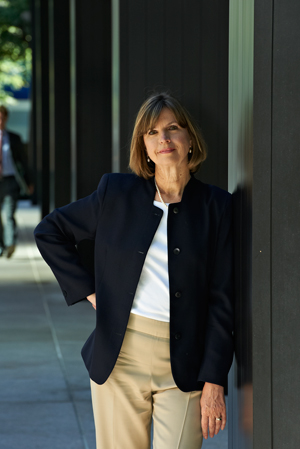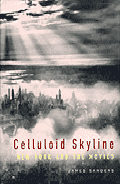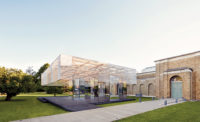The changing world of architectural photography
‘Beauty is truth, truth beauty.’
— John Keats
Hold on a sec, Mr. Keats: When it comes to photography and architecture, truth is not that pure and simple. We all look at images of architecture every day, on the Internet and in magazines like this one. Architects depend on photography to document and market their work, and here at Record, photographs help us consider which projects to cover. When we lay out the magazine’s pages, we think carefully about which pictures best convey the experience of a work of architecture.

But conveying the experience of architecture through images is subjective and problematic, to say the least. There’s probably no more famous photograph in American Modernism than Julius Shulman’s 1960 shot of a glassed-in living room overlooking the glittering Los Angeles basin at night. Yet that picture—of Pierre Koenig’s Case Study House #22—tells us very little about the actual design. What Shulman did so well was capture a mood. His photo of the pool of Richard Neutra’s Kaufmann House in Palm Springs is so evocative you can practically hear Sinatra wafting from the hi-fi and catch a whiff of Bain de Soleil.
A tipping point in romantic architectural photography may have been a beautiful image by Peter Aaron of an early Rem Koolhaas house on the outskirts of Paris, with a woman poised to dive into the rooftop pool for a nighttime dip, as the Eiffel Tower glimmered far in the distance. Koolhaas has said he didn’t like the picture, and who can blame him? Though it landed on the cover of a big shelter magazine, it hardly showed the house at all.
Such giants of post-World War II architectural photography as Ezra Stoller and Balthazar Korab rarely stooped to that kind of theatrics. The drama in their pictures came from the brilliant use of light and shadow in images of sweeping grandeur or of minute details, from the epic curves of Saarinen’s TWA terminal, say, to intense close-ups of richly textured concrete. Their photographs glorified majestic exteriors and serene interiors, unsullied by human use.
Yet in keeping with a shift in 21st-century architectural values, where buildings are seen not so much as idealized sculptural objects but as part of the fabric of places, photography, too, is changing. Documenting architecture is often less pristine these days, whether in the painterly photographs of Robert Polidori, who has shot decaying Havana villas and the ravages of post-Katrina New Orleans, or in the urbane images of Iwan Baan. The Amsterdam'based Baan, who spends so much time on airplanes he could be called the flying Dutchman, shoots houses, museums, office buildings, and city streets all over the globe, with passing traffic, telephone wires, and people running, schmoozing, skateboarding. His photographs are alive with the pulse of real places.
Which is not to say that even Baan’s great pictures, or those of his talented peers, offer the 'whole' truth. They record what a photographer chooses to show us—his or her framing and sense of scale. Documentary filmmaker Errol Morris, the author of the book Believing is Seeing: Observations on the Mysteries of Photography, has said there’s no such thing as a 'true' photograph, but that the mission of photography is to try to pursue the truth.
But now that any fool with a laptop can mess around with Photoshop, some photographers seem to be pursuing the opposite direction, doctoring images of buildings to the level of airbrushed perfection demanded by aging movie stars. We’ve seen architectural photographs so thoroughly re-touched that they look as fake as computerized renderings. We’ve even received photos of buildings in false settings: One architect, apparently hoping to appear socially conscientious, Photoshopped his handsome project into a view of a slum instead of the middle-class neighborhood where it was actually built. And let’s not even get started on the kind of distortion that makes a picture all about the artist, not the subject.
We know the limits of photography. We’ve all visited a place we knew from stunning images only to find it oddly underwhelming. And we know the corollary: It’s impossible to do justice to the space of the Pantheon or the Hagia Sophia in two dimensions. Some quiet minimalist buildings, wonderful to linger in, go flat in front of the camera.
Yet with all the caveats, we do our best to bring you the most significant images we can in Record, those that contain the true essence of a project’s design: the details, context, materials, a sense of the experience. But honestly—we’re suckers for beauty, too. And often enough, it and truth are on the same side.





Post a comment to this article
Report Abusive Comment